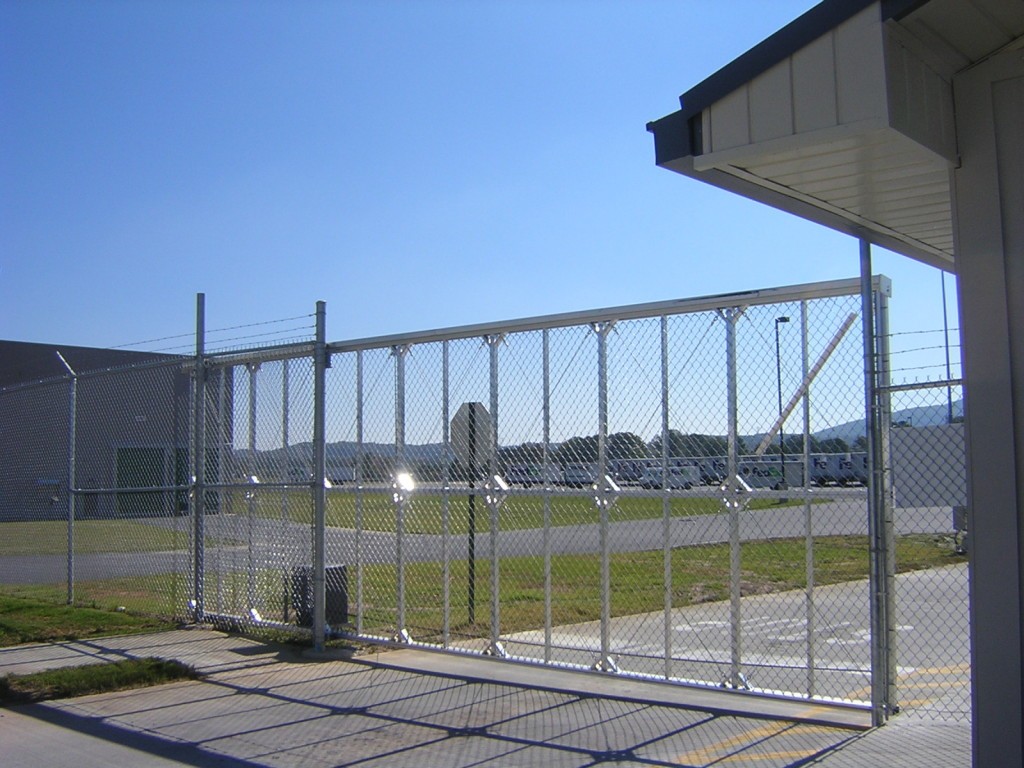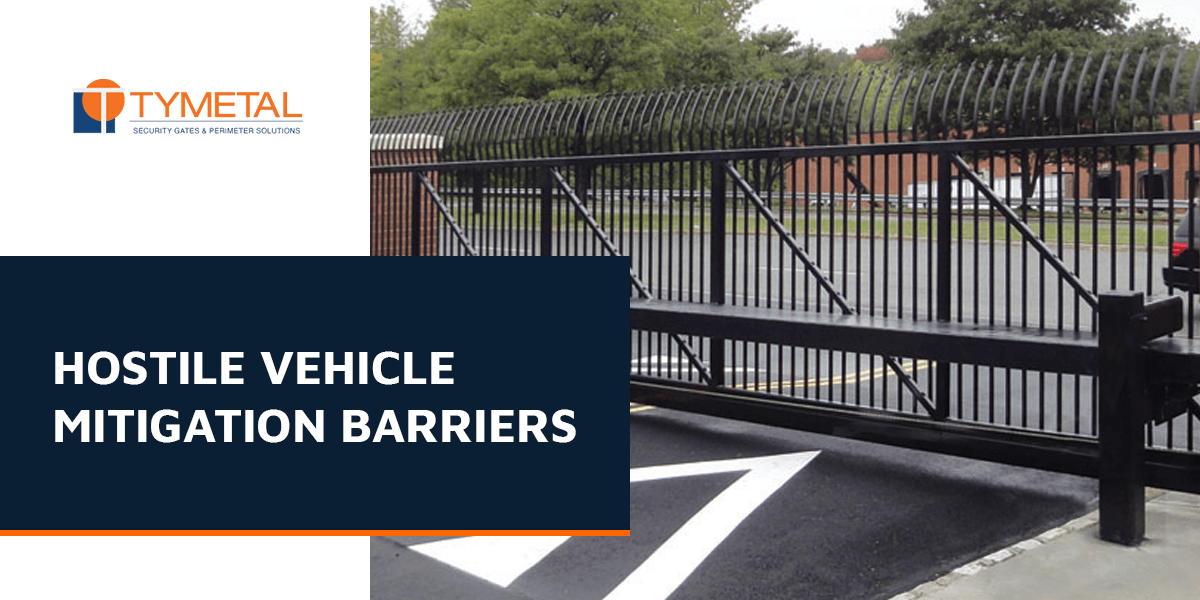
Hostile Vehicle Mitigation Barriers
If a person attempts to drive onto your property without stopping at fences, gates, or pedestrians, how far would they go? With the right security measures in place, you can stop such vehicles and protect both people and property. In this guide on hostile vehicle mitigation, we’ll explore some of the most effective strategies to defend against vehicle attacks.
Table of Contents:
What Is a Vehicle as a Weapon Attack? | How to Prevent Vehicle Attacks | What Are Hostile Vehicle Mitigation Barriers? | How Are Vehicle Security Barriers Tested? | Types of Vehicle Mitigation Barriers | HVM Applications | Choose TYMETAL For Your Next HVM Product
What Is a Vehicle as a Weapon Attack?
Vehicle crashes are unfortunately common and can have devastating consequences. In 2020 alone, there were over 42,000 fatal vehicle crashes in the U.S., which averages to more than 115 per day. Most of these incidents are accidents, not intentional acts. However, in recent years, there has been an increase in what is known as a "vehicle as a weapon" (VAW) attack — when someone uses a vehicle to harm others, either as part of a random act of violence or a targeted attack.
According to the Office of the Director of National Intelligence (ODNI), the most common type of vehicle-borne attack in the U.S. is a vehicle-ramming attack. This involves intentionally driving a vehicle into another vehicle, a building, or a group of people. One of the deadliest examples occurred in Nice, France, in 2016, where a driver plowed into a crowd, killing 86 people. While not all VAW attacks are that severe, they often result in serious injuries or property damage.
These types of attacks can also target buildings by ramming into their facades, aiming to disrupt operations or cause damage. Whether intentional or accidental, the impact of a vehicle on a facility can be significant, making it essential to implement strong security measures.
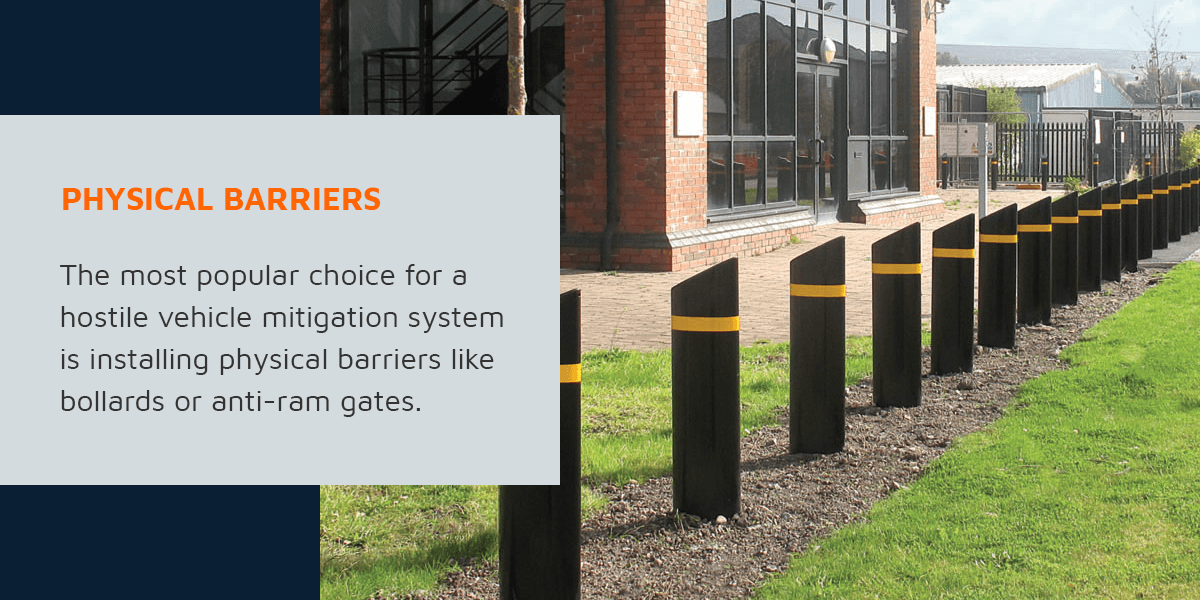
How to Prevent Vehicle Attacks
Architects, engineers, and facility owners must be aware of the threat posed by VAW attacks and take steps to protect people and structures. These protective measures are known as hostile vehicle mitigation (HVM). There are two main approaches to mitigating the risk of such attacks:
- Campus design: One strategy is to design roads in a way that makes it harder for a vehicle to gain speed and enter pedestrian areas. Curved access roads or sharp turns before entrances can help slow down vehicles. While this approach is ideal during new construction, it should still be combined with physical barriers for maximum protection.
- Physical barriers: Installing bollards, crash fences, and anti-ram gates is the most common method of HVM. These barriers are designed to stop vehicles, even if they are moving at high speeds. They can be used in both new and existing facilities to enhance security.
While design choices and barriers may not prevent an attacker from planning a VAW attack, they can significantly slow them down or stop them entirely if implemented properly.
What Are Hostile Vehicle Mitigation Barriers?
Physical barriers are among the most effective ways to protect people and buildings from potential VAW attacks. These barriers are commonly referred to as hostile vehicle mitigation (HVM) barriers. The force exerted by a vehicle depends on its mass and acceleration, so even a standard SUV weighing 5,000 pounds can cause massive damage at high speeds. Larger vehicles like semi-trucks pose an even greater threat.
HVM barriers are designed to withstand such impacts and stop a vehicle in its tracks. You’ve likely seen them in places like college campuses, government buildings, and public spaces. In these locations, they often appear as bollards or decorative elements that blend into the environment. Private facilities may use more visible barriers like anti-ram gates to control access and prevent unauthorized entry.
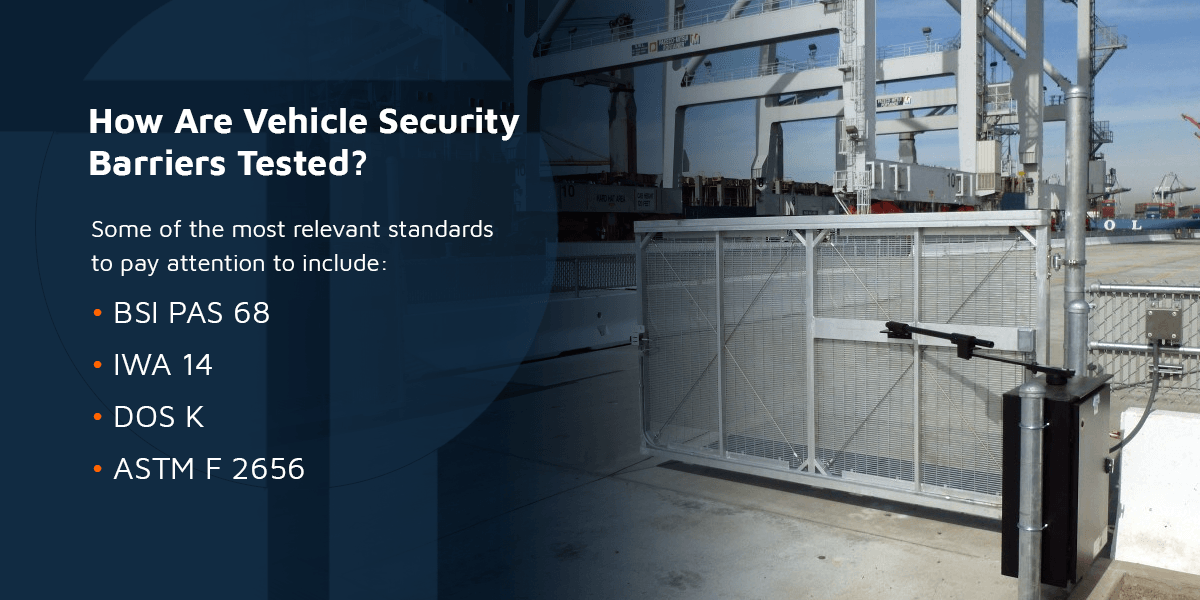
How Are Vehicle Security Barriers Tested?
To ensure effectiveness, HVM barriers must undergo crash testing to meet specific safety standards. Some of the most important criteria include:
- US DOS/DOD K ratings: Although no longer official, these ratings indicate the ability of a barrier to stop a 15,000 lb vehicle at different speeds (K4 = 30 mph, K8 = 40 mph, K12 = 50 mph).
- ASTM F 2656: This standard replaced the DOS/DOD ratings in the U.S. It provides detailed information about a barrier’s resistance to penetration.
- BSI PAS 68: A key standard in the UK, BSI PAS 68 outlines the performance of HVM barriers based on the type of vehicle and impact speed.
- IWA 14: An international standard that specifies the essential impact performance requirements for vehicle security barriers.
Understanding these ratings helps facility managers choose the right level of protection for their site.
Read our guide to Understanding Crash Ratings
Types of Vehicle Mitigation Barriers
There are two main categories of HVM barriers:
- Active barriers: These are designed to deploy and retract when needed, allowing controlled access to a facility. Examples include drop-arm crash beams that block access until authorized entry is granted.
- Passive barriers: These remain in place at all times and are used to guard areas where vehicles should never enter. Examples include bollards, walls, and fences.
Most facilities benefit from a combination of active and passive barriers for comprehensive protection. Let’s look at some of the most popular options available.
1. Crash-Rated Planters
Traditional landscape features often fall short of the security required to prevent hostile vehicle attacks. Instead, consider integrating HVM barriers that double as attractive landscape elements. The Universal Slimline Planter 40 from TYMETAL Corp. is designed to stop a 7.5 metric ton vehicle traveling at 40 mph. Despite its sleek appearance, it is a reinforced concrete planter that blends seamlessly into any environment while providing strong security.
2. Crash Beams
For access points, a drop-arm crash beam is an excellent option. These beams resemble the arms that block parking garages but are built to withstand high-speed collisions. Made from durable materials like aluminum and steel, they are anchored with a concrete base. TYMETAL offers crash beams rated to handle impacts from vehicles traveling at 30 to 50 mph, depending on the model. Options include manual, hydraulic, and electro-mechanical operation.
View Our Crash Beams
3. Bollards
Bollards are cylindrical posts that allow pedestrians and cyclists to pass freely while blocking vehicles. They come in removable and fixed versions and are made from various materials. Fixed bollards are typically installed deep into the ground for added strength, while removable ones can be retracted when access is needed. TYMETAL's shallow-mount bollards are designed to flex slightly upon impact, reflecting much of the vehicle's energy back and stopping it effectively. Their most heavy-duty model can stop a 16,534 lb vehicle traveling at 50 mph.
Bollards are versatile and can be decorative or functional, depending on the design. Some feature lights or are cast in bronze, while others use bright yellow stripes for visibility.
View Our Crash Bollards
4. Fences
Standard fences are not sufficient to stop a vehicle, but crash-rated fences, also called anti-ram fences, are designed specifically for this purpose. These fences are usually installed alongside existing perimeter fencing to add an extra layer of protection. TYMETAL's crash-rated fences can stop a vehicle up to 15,000 lbs traveling at 50 mph. They consist of posts connected by cables that absorb and deflect the energy of a collision, stopping the vehicle before it can do further damage.
View Our Crash Fences
5. Gates
Gates are a common feature of restricted-access properties. However, standard gates may not be enough to stop a vehicle attempting to breach the perimeter. Anti-ram gates, like those offered by TYMETAL, are designed to withstand high-speed impacts. They can open and close manually or automatically, allowing authorized personnel to enter while preventing unauthorized access. Popular options include cantilever slide gates, overhead slide gates, and swing gates.
View Our Crash Gates
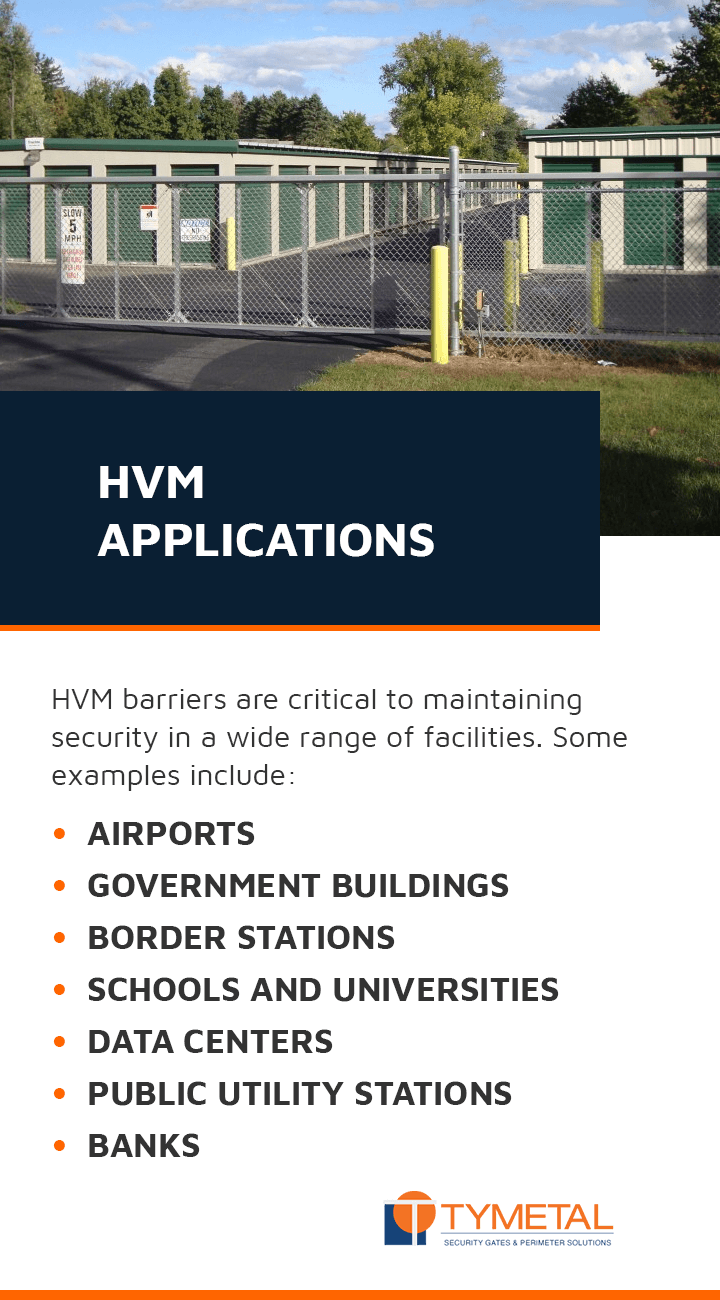
HVM Applications
HVM barriers are used in a wide range of facilities, including airports, government buildings, schools, data centers, and public parks. These barriers play a critical role in enhancing security and protecting people from potential threats. Even public spaces like shopping areas and bike paths can benefit from HVM solutions to keep pedestrians safe.
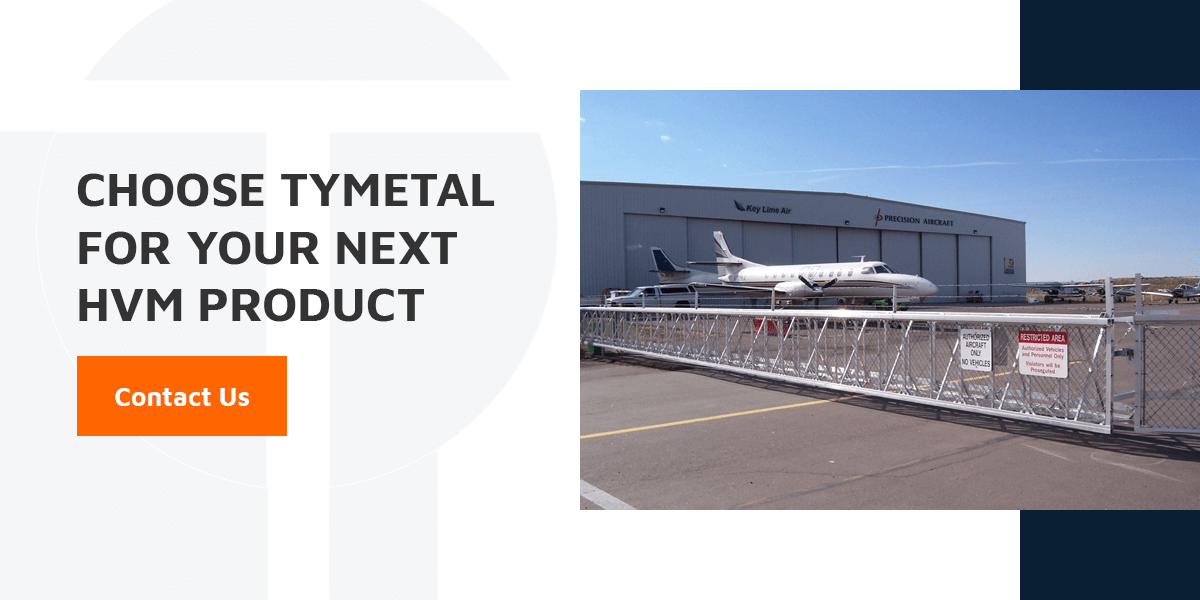
Choose TYMETAL for Your Next HVM Product
If you're looking to improve your property's security against hostile vehicle attacks, partner with TYMETAL. With decades of experience and a commitment to innovation, we provide top-tier HVM solutions tailored to your needs. Contact us today to learn how we can help protect your facility. Fill out our online form or call us at 888-978-GATE (4283).
Metal Spinning Copper Products,we have sing bowl,horn and so on. We also can make incense burner.And we can make it if you send us the design drawings.
Copper processing Metal copper cover plate Water bowl
Shaoxing Hui Da Metal Products Factory , https://www.syhdmetals.com

